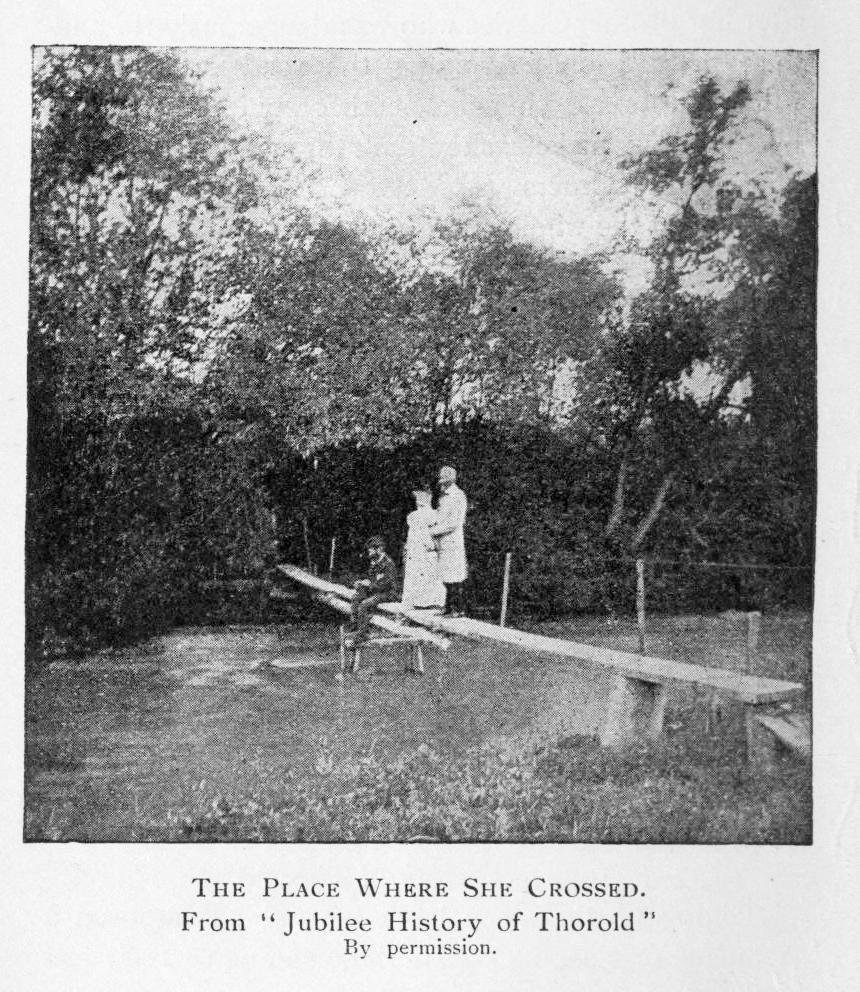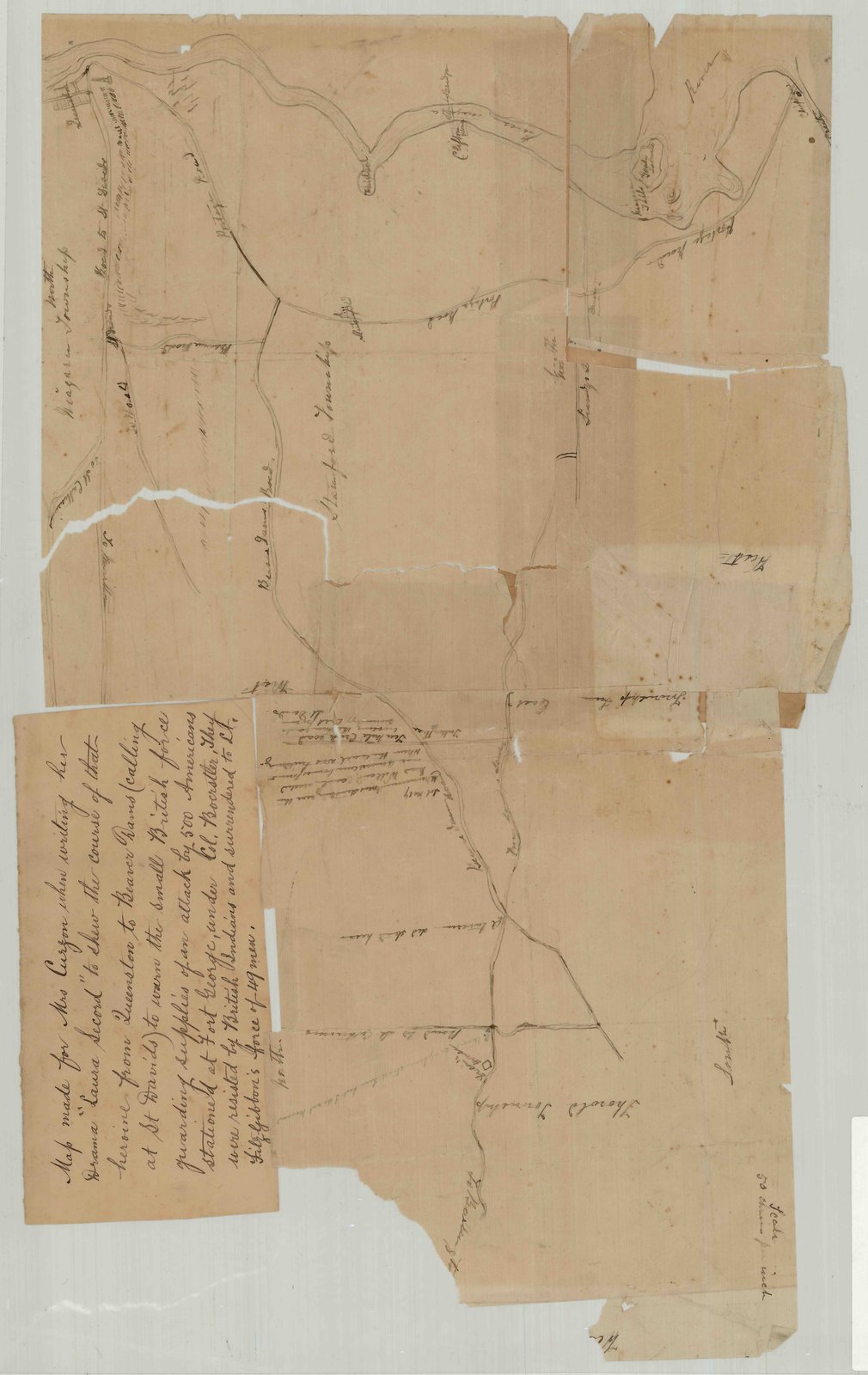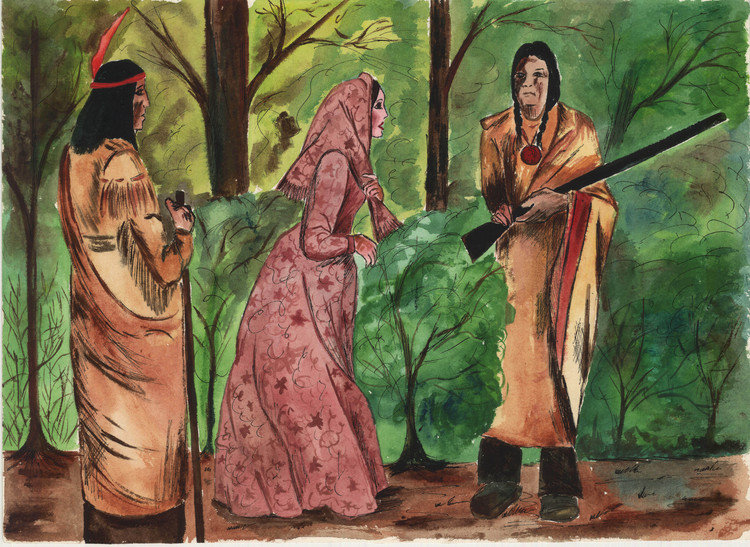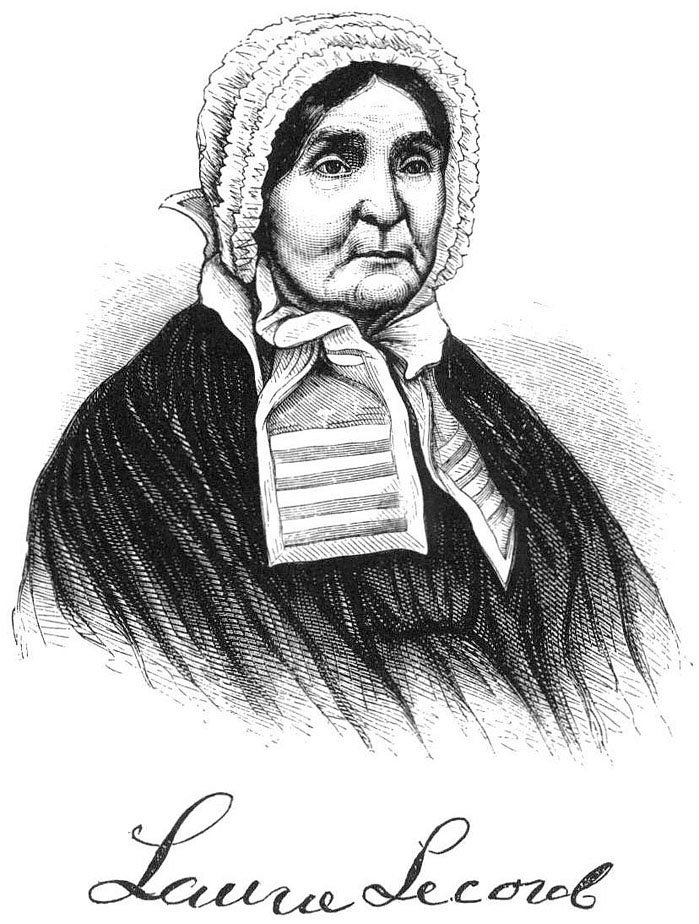One of the most famous settler women in Ontario is Laura Ingersoll Secord (1775-1868). She was born in Massacheusetts and moved to Upper Canada in 1795. She married Loyalist James Secord shortly after and they moved to Queenston, near present-day Niagara-On-The-Lake. People described her as lean and fragile, a 5'4" woman who appeared "delicate."
James Secord was in the British military and was wounded during a fight called the Battle of Queenston Heights.
While Laura was nursing James, and with American troops occupying Queenston, some soldiers stayed in the Secord house. Laura was able to eavesdrop on them, and overheard a conversation about an upcoming attack by the American soldiers on the British army at nearby Beaver Dams. We don't know for sure how she came by the information, but people like to say she heard them talking during dinner.
With her husband still bedridden, Secord didn't have any other way to get this information to the British forces, so she decided to set out alone to warn them herself. She walked all night, more than 30 kilometres, through forest, fields, and swamps. She had to navigate past the edges of the American military and wander past several towns without being caught.
When she met up with the allied Mohawk forces, they took her to the British lieutenant, where she made her report. With this warning in hand, the allies stationed themselves at Beaver Dams and surprised the American military as they approached their intended battle site. Most of the American soldiers were killed or captured.
Though Secord had no training or job, she had done what many soldiers and spies never get to: helped repel an attack and win a battle for her country.
Her bravery and tenacity has been rewarded with postage stamps, a Heritage Minute, books, plaques, and a museum in her former house in Queenston.

Courtesy the Niagara-on-the-Lake Public Library. [Learn More]
As so much time has passed, it's impossible for us to say with certainty the real story of Laura Secord's venture. It's said that Laura originally claimed her husband told her about the impending attack, and that later in her life she told her granddaughter that she herself overheard the soldiers talking.
A speech given in 1907 describes the event this way:
Laura Secord was an interested listener. The danger was imminent. Her country would be under the foot of the invader. Her blood boiled at the thought. But what could she do? Her husband was severely maimed. He could never entirely recover. Her four children needed her care. But her patriotism urged her to action. True she was in the lines of the Americans, but skill might extricate her. The dangers of the forest, of the lynx and wolf and serpent, were not to be overlooked.
... She rose at early dawn on June 23. Although above the peasant garb which she assumed, yet without compunction she dressed in a short flannel skirt and cotton jacket, and without shoes and stockings started through the dewy herbage.
Though the story of her milkmaid dress is denied (the cow and milkpail being declared a fable) yet it is still believed. She sought her cow, the story goes, and secretly prodding it while pretending to milk it passed the American sentry. One report is that she carried a bunch of violets which she gave the sentry, but this seems somewhat apocryphal. Another explanation is that she gained permission to see her sick brother Charles who was at St. David's. But passion and inspiration find their own means, and she reached St. David's at sunrise. Her friends at St. David's dissuaded her, but it was useless. It is said that her niece Elizabeth Secord accompanied her for seven miles by road until Twelve Mile Creek was reached, but could go no further. This seems unlikely as a letter signed by herself says that American sentries were ten miles out from Fort George. This made it necessary for her to leave the public road. She also desired to avoid De Haren's post, lest there she should be delayed. Through the tangle wood of the pristine forest she made her way.
We don't have much evidence from other sources about the results of Secord's report. Secord was never mentioned in military debriefs of the battle near Beaver Dams. The lieutenant that Secord told her story to wrote this in a letter many years later:
I do hereby Certify that on the 22d. day of June 1813, Mrs. Secord, Wife of James Secord, Esqr. then of St. David's, came to me at the Beaver Dam after Sun Set, having come from her house at St. David's by a circuitous route a distance of twelve miles, and informed me that her Husband had learnt from an American officer the preceding night that a Detachment from the American Army then in Fort George would be sent out on the following morning (the 23d.) for the purpose of Surprising and capturing a Detachment of the 49th Regt. then at Beaver Dam under my Command. In Consequence of this information, I placed the Indians under Norton together with my own Detachment in a Situation to intercept the American Detachment and we occupied it during the night of the 22d. – but the Enemy did not come until the morning of the 24th when his Detachment was captured. Colonel Boerstler, their commander, in a conversation with me confirmed fully the information communicated to me by Mrs. Secord and accounted for the attempt not having been made on the 23rd. as at first intended.
— James FitzGibbon, letter dated 11 May 1827
Some people think that Secord was left out of the official military reports of the battle to keep the Secord family out of danger - they would have been singled out for punishment by the American troops. If Secord had gotten the information from an American soldier who was betraying his country to work with the British forces, that soldier would have been executed - a good reason to leave them out of official reports, too.
Mohawk chief John Norton wrote in his diary about the battle that "a loyal Inhabitant brought information that the Enemy intended to attack" - but doesn't say who.
We also don't know the actual route Laura Secord used, or whether she brought a cow with her as a reason to be outdoors and so far from home that day.

Courtesy the Six Nations Public Library. [Learn More]
Many people have tried to guess Secord's route, and imagine different difficulties she would have had to contend with, such as crossing bodies of water or getting through swamps. Here are two maps imagining the trek - do you think either of them is accurate?


What do you think of Laura Secord's legacy? What do you think is true about the legend of her trek through the wilderness?




Courtesy the Six Nations Public Library. [Learn More]



